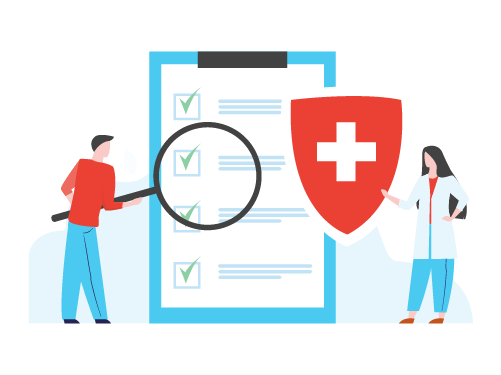[ad_1]
Continuing the Knowledge Series- today we are going to cover, how to buy a mediclaim policies/what to look in a health insurance policy. Medical illnesses often strike without warning and not only do they cause emotional trauma and shock, but they are also a drain on personal and family finances.
Health Inflation and costs of hospitalization are growing between 10-15% per annum. Covid-19 has also accelerated the problem. Individuals must have medical insurance after taking into cognizance one’s income levels and the health profile of family members. Further, in the case of group insurance cover that makes most youngsters callous about taking on their insurance policies, many medical risks are not covered, as these are group policies. Besides, such policies offer insurance cover until the employee continues working with the company.
The ideal way for a salaried person to approach health insurance is to ensure he/she has both company and individual cover benefits. It will be prudent to utilize the company’s health cover benefits first. This will allow the no-claim bonus to accrue in one’s favor, for the individual health policy that can reduce the premium in subsequent years.
An effective and less costly option to increase health cover is purchasing a Top-Up Health Plan. A top-up health insurance coverage kicks in after the base cover is exhausted. Since the claim can be done only after the basic sum insured is exhausted completely, the premium on such as Top-up and Super Top-up plans are much lower.
Some make the mistake of combining the parent’s medical insurance cover in a younger, healthy family of three or four members. This will impact the premium payable in total, especially if the parent’s medical health history is not good. Of course, the amount of health insurance coverage needed is dependent on whether one is single, married, divorced, widowed, male, female and would also depend on the age and current health condition of the individual.
What should one look for in health insurance policies:
Sometimes low premiums parity hides under the mask of what is called insurance deductible. This is where the policyholder has to pay a certain amount first after which, the insurance company pays the rest of the premium. In such policies, the insurance company is not liable to honour a claim before the policy holder pays the deductible.
While these are few, they are usually similar across most health insurance companies. Exclusions may pertain to prior or existing ailments, minor illnesses, surgeries that do not require hospitalization, outpatient maternity benefits, alternative medicine treatment expenses, vision and dental problems to name a few.
In the guise of lower premia, many policy holders are shocked when they do not get the benefit of private room reimbursement for their hospitalization. Sadly, one never checks on these facilities until the problem strikes. So, it is very important to clarify this, as it may entail a marginally higher premium.
Lower premia could entail twin sharing rooms, part reimbursement of medical facilities such as operation theatre charges, equipment used, non-surgical equipment, etc. as these have been outside the scope of the policy coverage.
Selecting a policy which has a cashless facility can be financially less taxing and less stressful in times of medical emergency. Make sure you are aware of the list of hospitals, the name and address and contact details of the third-party administrators, who are, in the final run, facilitators of the claim.
The premium paid towards a health insurance policy, specifically under Sec 80D of the Income Tax Act has a tax deduction offset benefit of Rs 25,000 per annum for oneself(if age is less than 60) and family members. If the individual has parents above sixty years of age, they can get additional tax benefits by claiming tax-deduction on the premium paid towards parents’ policy. The tax exemption, in this case, is for premium paid up to Rs 50,000.
Therefore, make sure you go through the fine print of health insurance policies that run into several pages to take sufficient and appropriate health cover.
In short, do not wait any longer to buy sufficient health insurance cover!
[ad_2]
Image and article originally from www.plindia.com. Read the original article here.

